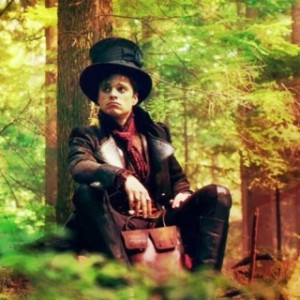The following is a guest post written by Erica Smith, who was enrolled in Dr. Rudy’s 394R class Winter Semester. This was a final writing assignment for Applied English Visualizing Wonder: Fairy Tales and Television. We hope you enjoy!
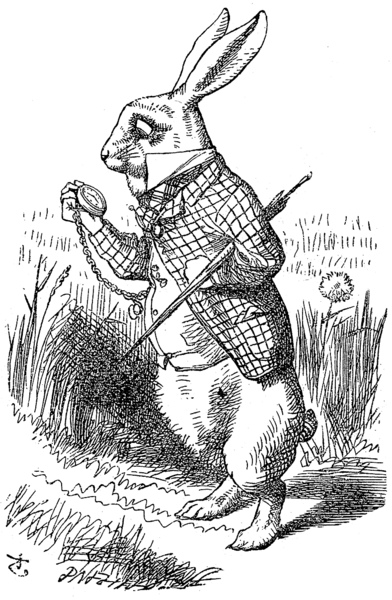
When Lewis Carroll’s novel, Alice’s Adventures in Wonderland, was published in 1865, it was received as a delightfully absurd children’s story. Disney’s 1951 Alice adaptation features lighthearted, fanciful musical numbers. In “A World of My Own”, Alice’s envisions her ideal mad world, one populated by talking flowers and “cats and rabbits…in fancy little houses.” Her madness is whimsical.
However, with the rise of drug culture in the twentieth century, audiences began to view Alice through a psychedelic lens. College students held acid-enhanced Alice viewing parties. Modern adaptations emphasized the madcap elements of the story. In 1967, the rock band Jefferson Airplane’s song “White Rabbit” responded to and popularized Alice’s relation to drug culture. This song and allusions to it are used to evoke a sense of madness in both Alice retellings and mainstream television.
One pill makes you larger
And one pill makes you small
And the ones that mother gives you
Don’t do anything at all
Go ask Alice
When she’s ten feet tall
The original Alice only contains one clear drug reference: the hookah-smoking caterpillar. She changes sizes by nibbling cake and drinking potions, not popping pills, and her growing is revised by Jefferson Airplane to evoke the feeling of getting high. Later on in the novel, the Caterpillar instructs her to use mushrooms to the same effect. The hallucinogenic properties of mushrooms weren’t known in Carroll’s day, but they were certainly a part of the 1960s psychedelic rock scene.
Once Upon A Time makes direct references to Jefferson Airplane via character names and incorporates the song’s drugged interpretation of Alice into their take on the story. Their Hatter is called Jefferson after the band. He’s also given a daughter, Grace, after Grace Slick, lead singer of Jefferson Airplane.
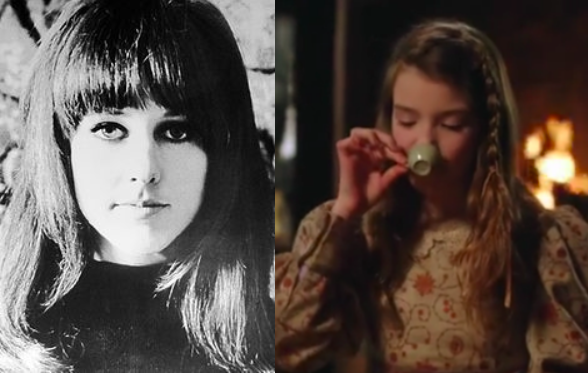
Carroll’s original Alice is less madcap than modern interpretations. Yes, the Cheshire Cat does tell Alice “We’re all mad here,” and the novel is full of illogical scenarios, but the tone is more whimsical than dark. Alice is “curiouser and curiouser” about the workings of Wonderland, but she never questions her sanity, and in the end she wakes to find it was all a dream. The “Mad Hatter” isn’t even given that title — he’s simply Hatter.
Madness is a central theme of Once Upon a Time’s interpretation of Alice. As of season one, episode 17 “Hat Trick,” the residents of Storybrooke have no memory of their fairy tale lives. Regina, Rumpelstiltskin, and Jefferson are exceptions. While Regina and Rumpelstiltskin suffer no ill effects from holding two sets of memories, using their knowledge to their advantage, Jefferson teeters on the brink of madness. Most damaging is his relationship with Grace. In Storybrooke, she is known as “Paige” and has a different set of parents. Once Upon A Time’s commitment to madness continues in their spinoff, Once Upon A Time in Wonderland. The pilot episode opens with Alice escaping from an insane asylum.
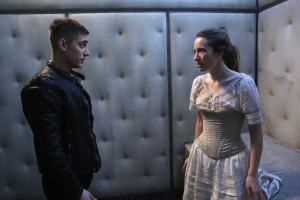
Madness and White Rabbit crop up in Disney’s live action Alice remakes. Grace Slick herself came out of retirement to sing White Rabbit for the soundtrack of Tim Burton’s 2010 Alice in Wonderland. Pink covered it for the sequel, Alice Through the Looking-Glass (2016). The adult Alice Kingsley questions her sanity throughout the 2010 film, and in the sequel, she’s wrongfully imprisoned in an asylum by a business rival.
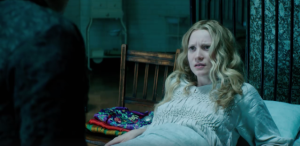
“White Rabbit” has been used to evoke madness and terror in non-Alice media as well. In the head themed Futurama episode “A Head in the Polls,” Nixon’s singing not only serves as a head joke, but evokes an era of drug culture, and highlights the madness of a political system that allows Nixon’s head to run for president.
In the pilot episode of Stranger Things, Eleven, a scared runaway, watches her only friend murdered as Grace Slick sings, “Logic and proportion has fallen sloppy dead.” Like Alice, she’s a young girl caught in a dark, madcap scenario without hope of refuge.
In the intro to the Supernatural episode “Hunted” (Season 2 Episode 10), White Rabbit plays while Scott tells a therapist of a yellow-eyed man who haunts his dreams. It crescendos with the line, “When the men on the chess board get up and tell you where to go.” Stranger Things crescendos with the “sloppy dead” line to match Benny’s death. Though Scott is also murdered at the end of the song, Supernatural chooses to emphasize influence from mysterious figures. Alice is ordered around by chess pieces, Scott by his dream haunter.
The line “go ask Alice” serves as the title for Beatrice Sparks’ 1971 young adult novel about teen drug addiction. The book, purported to be an anonymous diary, had a nameless protagonist, but she is called Alice in the 1973 TV movie adaptation. Both the book and movie were released a few years after the advent of Jefferson Airplane’s song.
“White Rabbit” has also influenced music used in fairy tale media. As the credits roll for Ella Enchanted (adapted from Gail Carson Levine’s Cinderella retelling of the same name), Kari Kimmel’s song “It’s Not Just Make Believe” describes several fairy tale heroines, including Alice.
I’m Cinderella at the ball
I’m Alice growing ten feet tall
It’s not just make believe
Alice’s growing is certainly not an invention of Jefferson Airplane, but they were the first to specify the height as “ten feet tall.” This is a direct allusion to “White Rabbit.” though here her change in size is used to evoke wonder, not terror.
Jefferson Airplane’s song has even generated a namesake Netflix series, White Rabbit Project, a science investigation show in the tradition of Mythbusters, that goes “down the rabbit hole” to explore topics such as superpowers, jailbreaks, and WWII weaponry.
The original Alice’s Adventures in Wonderland is a whimsical children’s story infused with a playful sort of madness. Disney’s iconic animated Alice followed suit. Though Alice is a lost child in world that runs on different rules than her own, she keeps her head about her. Modern Alice stories and Alice-influenced stories use allusions to the madness of Wonderland (particularly Jefferson Airplane’s drugged take on it) to evoke a sense of confusion, absurdity, and terror of the unknown.
